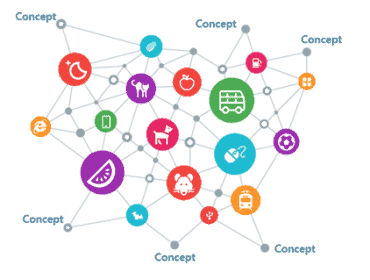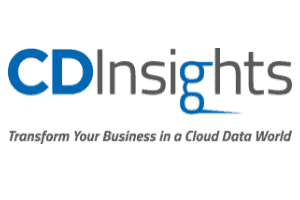
Data democratization is about giving everyone within an organization access to all of its data, regardless of what role that person has or what they might be trying to understand.
IIoT devices are responsible for an extraordinary ramp-up in the volume and nuance of data organizations create around their industrial operations and supply chains. That might seem like a win at first glance, but is more data beneficial if only a small chosen few are allowed to peek behind the curtain—and are immediately overwhelmed by what they find?
In a statement, Jason Spera, the CEO of Aegis Software, noted that manufacturers are “drowning in unusable, non-contextualized data without the ability for anyone in the organization to easily generate meaningful reports without requiring technical skills or burdening IT.”
IIoT data is a huge potential boon for manufacturers, but it’s also an opportunity for those who already have access to jump down too many “rabbit holes” and create more knowledge that doesn’t address the organization’s larger picture or how different business units talk about their problems. The democratization of data could be a solution—if organizations start implementing it on technological and cultural levels for the right reasons.
Data democratization in IIoT: a unique challenge
Data democratization is about giving everyone within an organization access to all of its data, regardless of what role that person has or what they might be trying to understand. With an industrial operation, this could mean giving sales, marketing, or supply chain people access to machine data to visualize, analyze, and generate insights from it.
And no, it’s not the same as diplomats using data for democracy.
Democratization is a break from the standard-issue way of managing data, where relevant experts in each business unit are solely responsible for how their data gets created and used. When done well, democratized data can help organizations reduce time wasted on duplicated efforts and remove silos around data or processes. It can even create a new “language” or social network around data.
And to those who were previously data gatekeepers, doling out scrubbed or simplified data sets based on what they thought their colleagues needed, it may seem a bit like the Wild West of data. How can just anyone make an intelligent opinion about a complex process?
The answer is in a bevy of new tools to help people access data, visualize it, and generate insights well after it’s been generated by this new wave of IIoT devices.
Low- and no-code platforms help non-technical business users build small custom web applications, complete with visualizations, to help them analyze even granular data in areas they aren’t a subject matter expert. They’re self-serve and shareable, which means they can start new cross-departmental communications about what would have previously been a siloed effort.
All of a sudden, everyone has access to not only the raw data but also a library of compiled reports, which creates that common, accessible language.
These platforms tend to have reasonably robust built-in security features, allowing business users to do all this work without running afoul of controls or policies previously set by the IT folks who installed all the IIoT devices to begin with. Data will generally be accessed and interacted with in read-only fashion, preventing any one person from overwriting the state of machine truth.
What’s at the intersection of IIoT and data?
This new philosophy on data, plus the chain of tools required to make it happen, from IIoT devices on your machines to investment in low-code data visualization platforms, only means so much if you can’t put it to proper use.
Performance KPIs
When generating regular reports or one-off progress updates for customers, each business unit now starts with the same set of data, all the way down to how individual machines have been operating. Instead of relying on IT staff or data scientists—if they’re fortunate enough to have them—to handle the initial data-gathering process, they’re free to customize definitions and outputs based on their needs.
Downtime events
IIoT data signal performance degradation and probable maintenance windows far faster than manual checks of eras past. That’s unsurprisingly useful for maintenance staff, but the customer experience team could also leverage the same data for customized dashboards to recognize when delays are inevitable and prepare customers with a far earlier warning.
Quality KPIs
Industrial organizations are keen on understanding and improving their cost of quality (COQ) picture—a reflection of how much they spend on quality-related activities. There’s the cost of good quality, which is how much they spend on investing in preventing poor quality and how much they spend on appraising the quality of their products. In contrast, the cost of poor quality is what happens, internally and externally, from failing to meet their customers’ standards.
Without a comprehensive dataset that includes raw data from all the organization’s business units, calculating the sum of those internal and external poor quality costs just might be impossible. QA engineers can tell you exactly how much the new equipment costs, but are they aware of lost contracts due to ongoing quality issues? Marketing can estimate quality-related damage to their brand, but can they understand the value of the time engineers spend on refining an industrial process?
The threat of democratization
While data democracy might have many advocates and a plethora of new tools to help implement the methodology, it has its detractors, too. Giving complex data to anyone might seem like a win, but what if they grossly misinterpret what they’re seeing and drive the organization in the wrong direction because of it? Ignorance can be bliss with data, too.
Others argue that data’s context is also just as important as the numbers themselves, which means they need to be handled by subject matter experts. We shouldn’t expect non-technical users to understand the tags that come with machine data, and we should avoid situations where different business units double or triple up on the same effort.
Not to mention cybersecurity—with so much more data to be exposed, what won’t go wrong?
Despite the valid concerns, citizen developers are here to stay, even in industrial organizations. A vast majority of app development will come from non-developers by 2024, and perhaps now is the best time for industry to double or triple down on the value they’re getting from the IIoT devices they’ve already invested in.





























